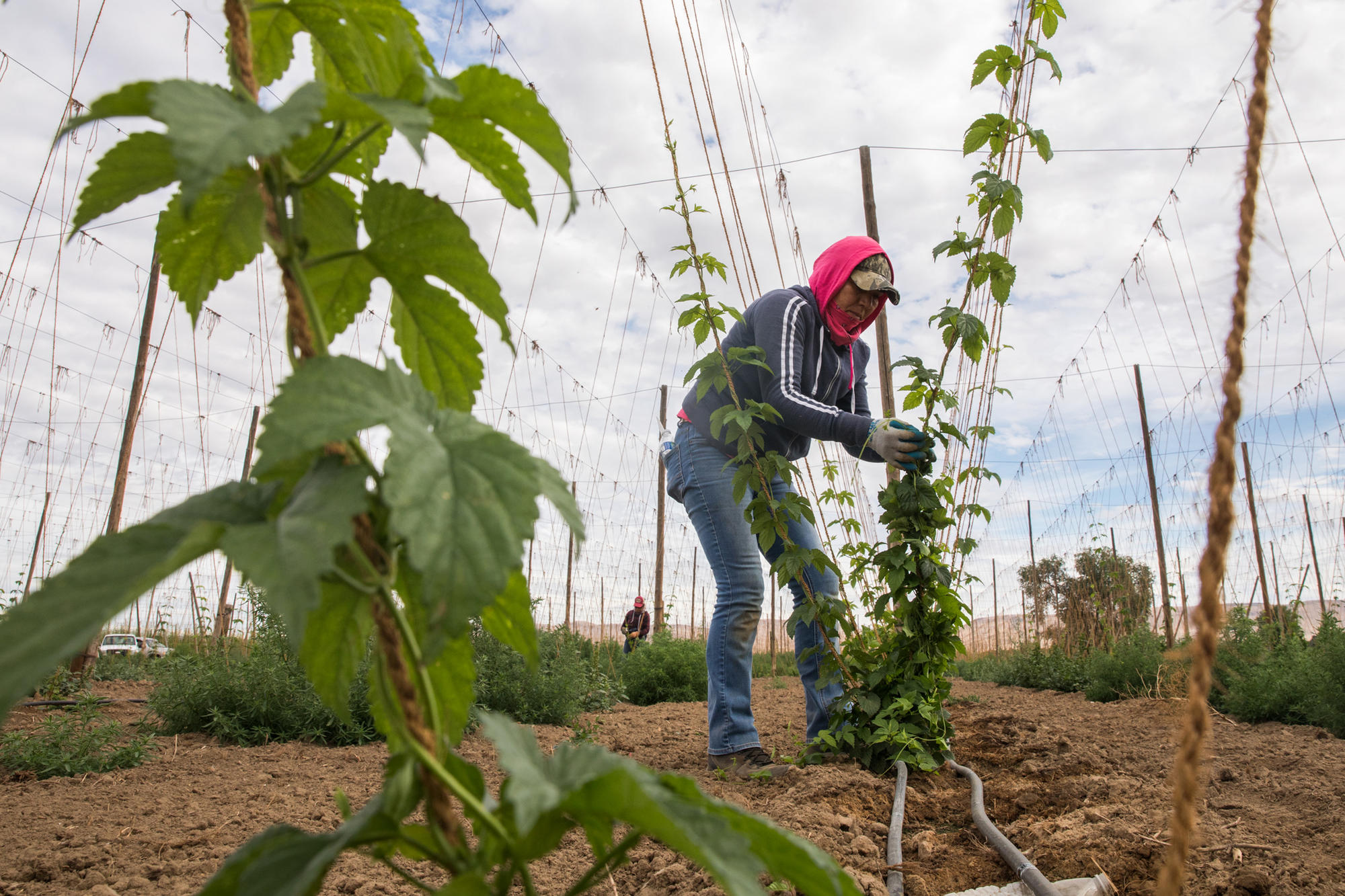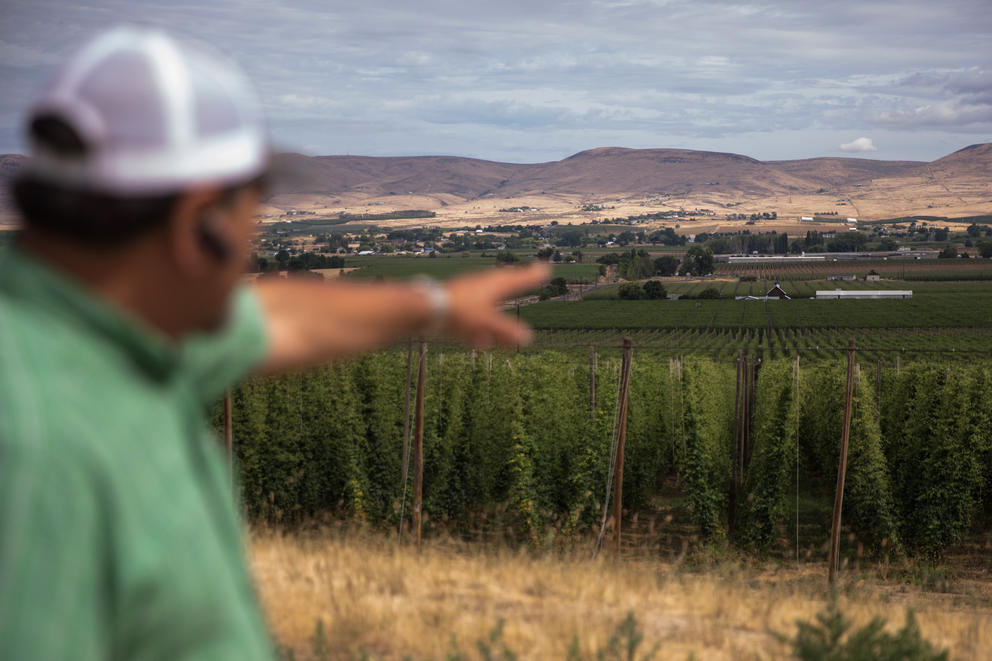Then, last year, VandenBrink decided to expand his efforts offshore. “Mountains and water are equally important in the Northwest,” he says.
For inspiration, VandenBrink focused on the Southern Resident Killer Whale population, which has become a symbol of a struggling marine environment battling development and climate change. His team suggested numerous ingredients sourced from the Salish Sea, where the whales roam, but seaweed, algae and salt all seemed to be “too esoteric.” Then VandenBrink remembered a meeting he’d had a few years before with a nonprofit called Salmon Safe.
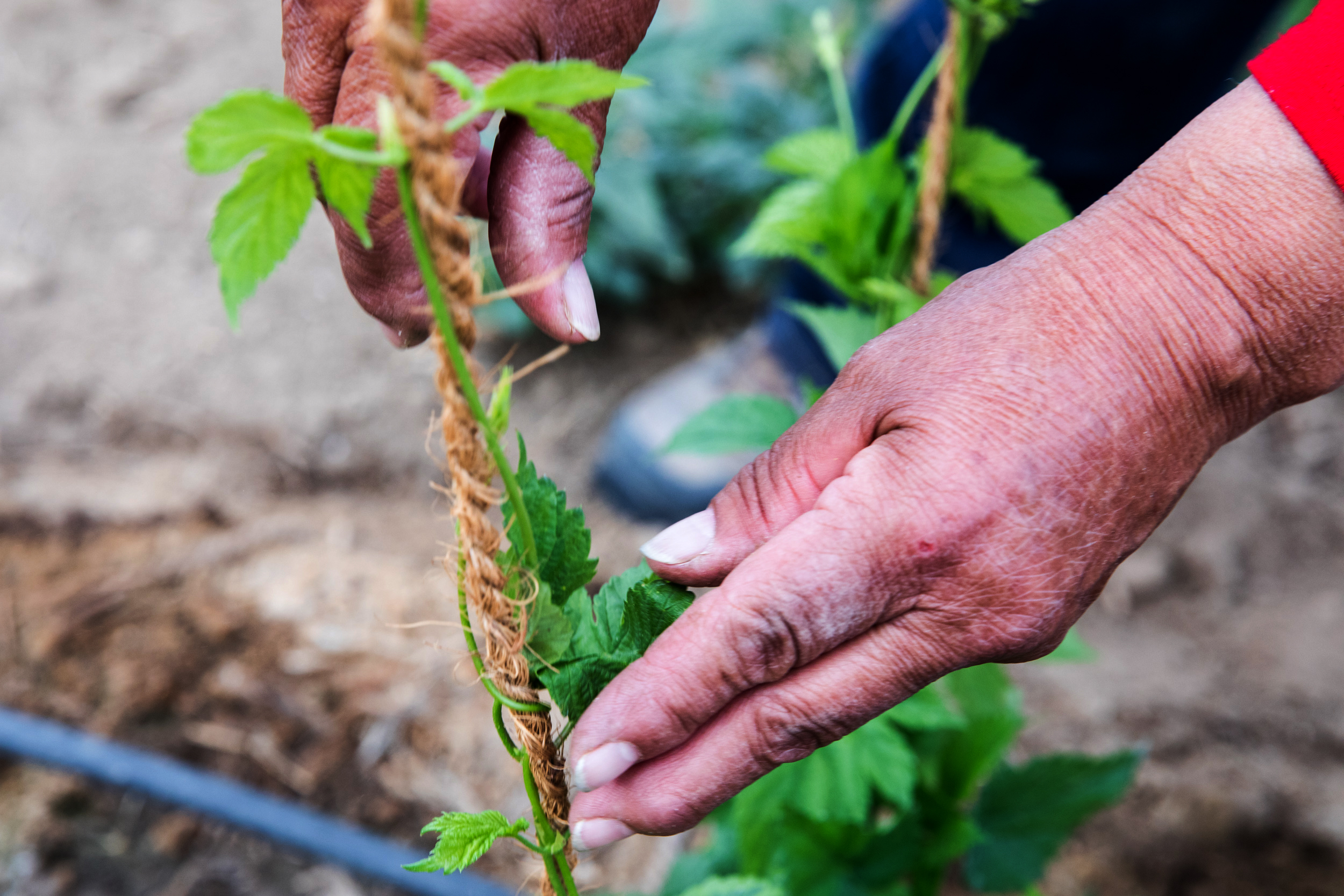
An Oregon-based sustainable certification organization, Salmon Safe encourages farms, vineyards, buildings and even golf courses throughout Washington, Oregon, California and British Columbia to mitigate their impacts on salmon habitat by doing things like reducing pollution-heavy stormwater runoff. For a brewery, that means getting its facilities certified or sourcing ingredients from farms that have restored salmon-inhabited streams and limited their use of water and pesticides.
“They were recruiting breweries to change their hops to Salmon-Safe hops, and I thought, well, heck, all the reading I've done in the news about the demise of the southern resident killer whales is because [of a lack of] salmon ... so let’s focus on ecological endeavors and use Salmon-Safe hops as a tribute,” VandenBrink says.
Southern Resident Killer Whale IPA was released to stores last month, its label featuring two orcas and a QR code that leads to the website of marine science nonprofit SeaDoc Society’s website. Two Beers' marketing material touts its use of Salmon-Safe Chinook hops sourced from Oregon’s Rogue Farms, and promises that proceeds (about 20%, VandenBrink says) will go to SeaDoc Society.
Two Beers is one of a handful of Pacific Northwest breweries investing in the growth of Salmon-Safe certified hops, banking on its ability to both appeal to consumers while lessening the impact of the brewing industry on salmon habitat. Along the way, these craft brewers have helped to change the way that some hops farmers in the region do business, giving Salmon Safe a foothold in a hugely influential and quickly growing agricultural sector.
Salmon Safe started as a program within the nonprofit Pacific Rivers in the mid-’90s. In 2002, Pacific Rivers consultant Dan Kent spun it out into its own organization to focus certification efforts on watersheds that Kent believed were governed by weaker regulatory mandates and needed private-sector support.
At first, the organization focused on vineyards, and only started certifying hops farms about 10 years ago in Oregon, with help from local hops farmer Gayle Goschie. It was Goschie and the rest of Oregon’s hops vanguard who helped spread the word about Salmon Safe to their neighbors to the north.
Kent says Salmon Safe began pursuing Washington hops farmers in earnest about five years ago, though it had been doing some work in Washington since 2004 with another local nonprofit, Stewardship Partners.
As a result of Salmon Safe’s efforts in the Pacific Northwest and Canada, more than 900 locations, making up more than 95,000 acres of land, have been certified Salmon-Safe over the past two decades. Eight hops farmers in the Yakima area have been certified since Salmon Safe started focusing on the region nearly five years ago, which Kent says accounts for 22% of all Yakima hops acres.
“We’re getting the kind of market presence in hops in five to 10 years that it took us 20 years to get in wine grapes,” Kent says.
A number of Pacific Northwest breweries, in addition to Two Beers, have either had their facilities certified or sought out certified ingredients — Hopworks Urban Brewery, Reuben’s Brews, Fremont Brewing and Deschutes Brewery, to name a few. Big names beyond the region like New Belgium Brewing have also joined the mix.
The demand from these breweries for sustainably produced hops has resulted in farmers like Michael Roy, CEO/president of Roy Farms, to pursue certifications. When Roy crossed paths with a Salmon Safe representative a few years ago, “I felt like it made sense, and we had some customers ... that were interested in [Salmon Safe] being part of their branding programs.”
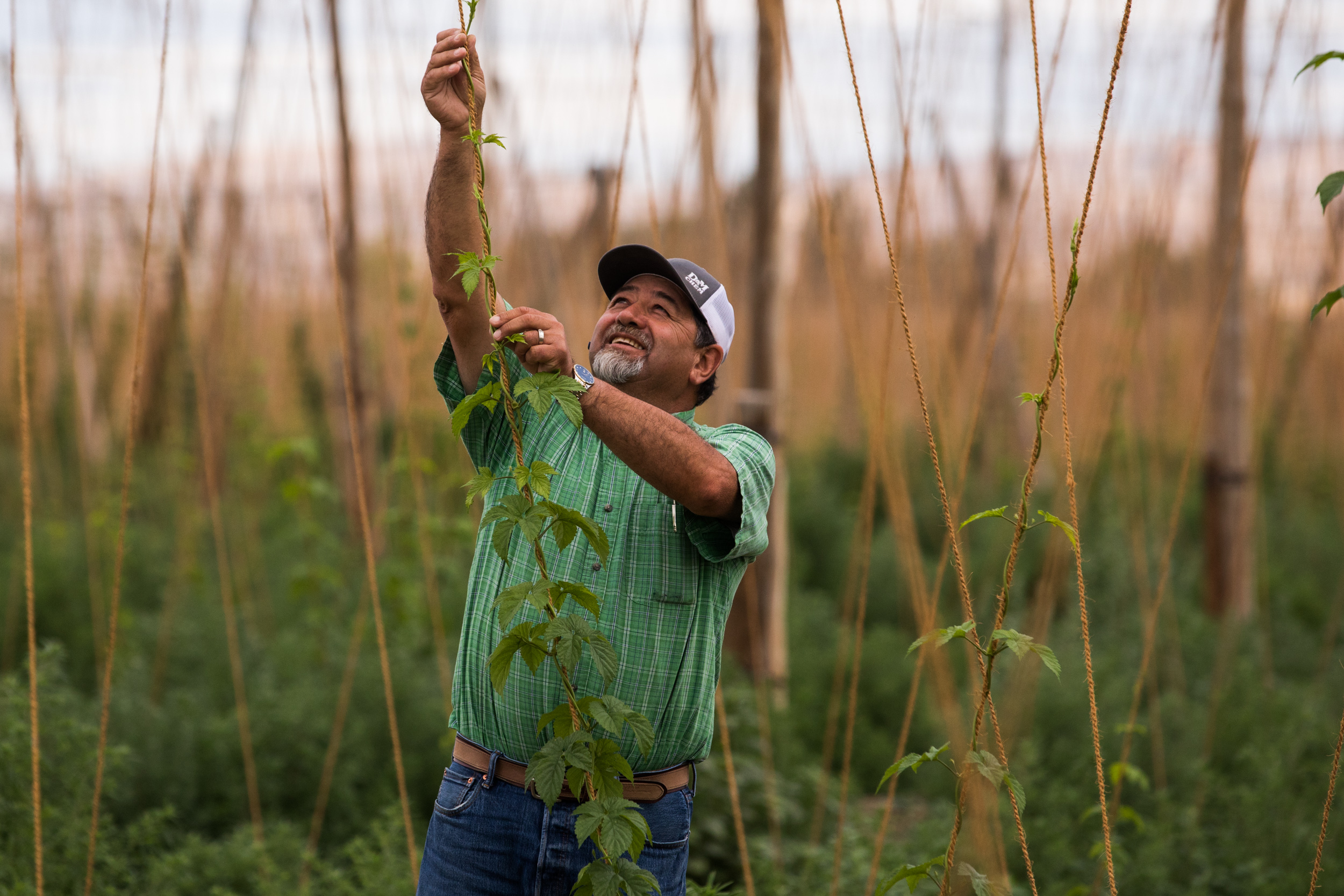
Roy, a fourth-generation employee at the 8,000-acre farm, grows mostly hops (3,500 acres), as well as apples, blueberries and cherries. About 150 miles southeast of Seattle in the Yakima Valley, the 115-year-old farm's runoff eventually runs into the Columbia River, which was historically a bustling wild salmon run.
The idea that hops farming would be harmful to salmon “was a bit confusing for people at first,” Roy says, “because we're not directly next to the [Puget] Sound or the ocean, but as time has elapsed, people have gotten it a little bit more.”
It's difficult to determine exactly how much damage hop farming, let alone agriculture, has and can yet do to salmon habitat in the Pacific Northwest.
According to Kent, the co-founder of Salmon Safe, about 80% of all pollution in the Willamette River and Puget Sound is so-called nonpoint source runoff, which comes from agriculture fields and city streets. “What the division is between urban runoff and agricultural runoff, we haven’t seen those numbers. But we know the agricultural impacts can be profound,” Kent says.
Hops provide the bitter lift in beer flavor profiles that is the darling of craft breweries, which abound in Washington state. It also requires a significant amount of water and land management to grow. In North America, most of that growth happens in the Pacific Northwest.
According to USA Hops, American growers harvested 55,035 acres of hops in 2018. Washington alone was responsible for 39,170 acres, about 71% of the total.
That 90% of all U.S. hops are sourced from the Willamette and Yakima valleys together pushed Salmon Safe toward hops growers as a platform to influence agriculture, says Kent.
That influence could be important in helping a booming agricultural segment that prioritizes healthy practices. Hops farming is blowing up: In USA Hops’ 2018 Statistical Report, the Hop Growers of America found U.S. hop acreage increased 94.6% from 29,683 in 2012 to 57,772 acres in 2018, with farmers struggling to keep up with expansion financially, let alone sustainably.
Decades of development “[have] fundamentally altered Washington’s rivers and dramatically reduced salmon populations throughout the state,” says Brandon Parsons of the nonprofit American Rivers, which releases reports on the state of American waterways. According to people like Parsons, augmenting waterways for human use makes rivers too hot and toxic for salmon, and also makes it hard for fish to navigate to their home spawning grounds.
“Fish are laying their eggs next to our farms,” says Amelia Bahr, a grants manager with Stewardship Partners. “Both urban and rural runoff is going to affect them … [and as] an indicator species, when the salmon are doing well you know that the watershed is healthy.”
Roy Farms hops vines sway in the wind on the farm in Moxee, Yakima County.
The farm certification standards used by Salmon Safe were first developed by Pacific Rivers in 1996 at conferences held at the University of Washington and Oregon State University, and have been updated regularly since then. They are informed by National Oceanic Atmospheric Administration Fisheries and its Northwest Fisheries Science Center in Seattle, particularly as related to stormwater and impacts of pesticides on salmon, Kent says. The standards take a holistic approach to farm management: You can’t certify just a part of a farm, but its entire operation.
To get that certification, farmers must target standards in six key areas.
To improve in-stream habitat, they remove alterations that help humans but not fish. This means taking out stream-bank armoring (like rocks that reduce erosion but keep salmon from accessing shallow water), reintroducing wood into the streams and “channelizing” the streambed.
What happens just outside the stream also impacts fish, so farmers replant vegetation that stabilizes riverbanks with roots while adding nutrients to the ecosystem and providing crucial shade. They also remove surfaces like concrete that don’t drain, which worsens stormwater runoff.
To help fish get around these newly available sections of stream, farmers must improve fish passage by replacing culverts with better alternatives. But a navigable stream is no good without enough water, so farmers also increase and stabilize streamflow by reducing and more evenly regulating water use. Adding water to a system also cools down water that, through low volume and lack of vegetation, is too hot for salmon. Water quality measures happen beyond the stream and include removing excess nutrients and pollutants like pesticides from fields.
Lastly, growers must cultivate biodiversity on the farm by increasing the number of animals living in and around the river system, which helps ecosystem resiliency in the face of disease and disaster.
Third-party certifiers ensure farms keep up with the standards by auditing them once a year and visiting every three years.
“The components of it seem to make a lot of sense,” says Mike Cox, a scientist who retired in 2017 from a 30-year career with the Environmental Protection Agency, where he focused mostly on water quality, toxics and climate change. In the course of his work in Puget Sound and through the Columbia River Toxics Reduction Working Group, he became familiar with Salmon Safe and researched its certification standards.
“You hear about these third-party certifications all the time, and there's some greenwashing going on,” he says, referring to the business practice of using deceptive marketing language to overpromise environmental benefits. “[But] when you start looking at the core elements of [Salmon Safe], especially for farms, to me it captures the breadth of the things you want to look at” when it comes to salmon habitat improvements."
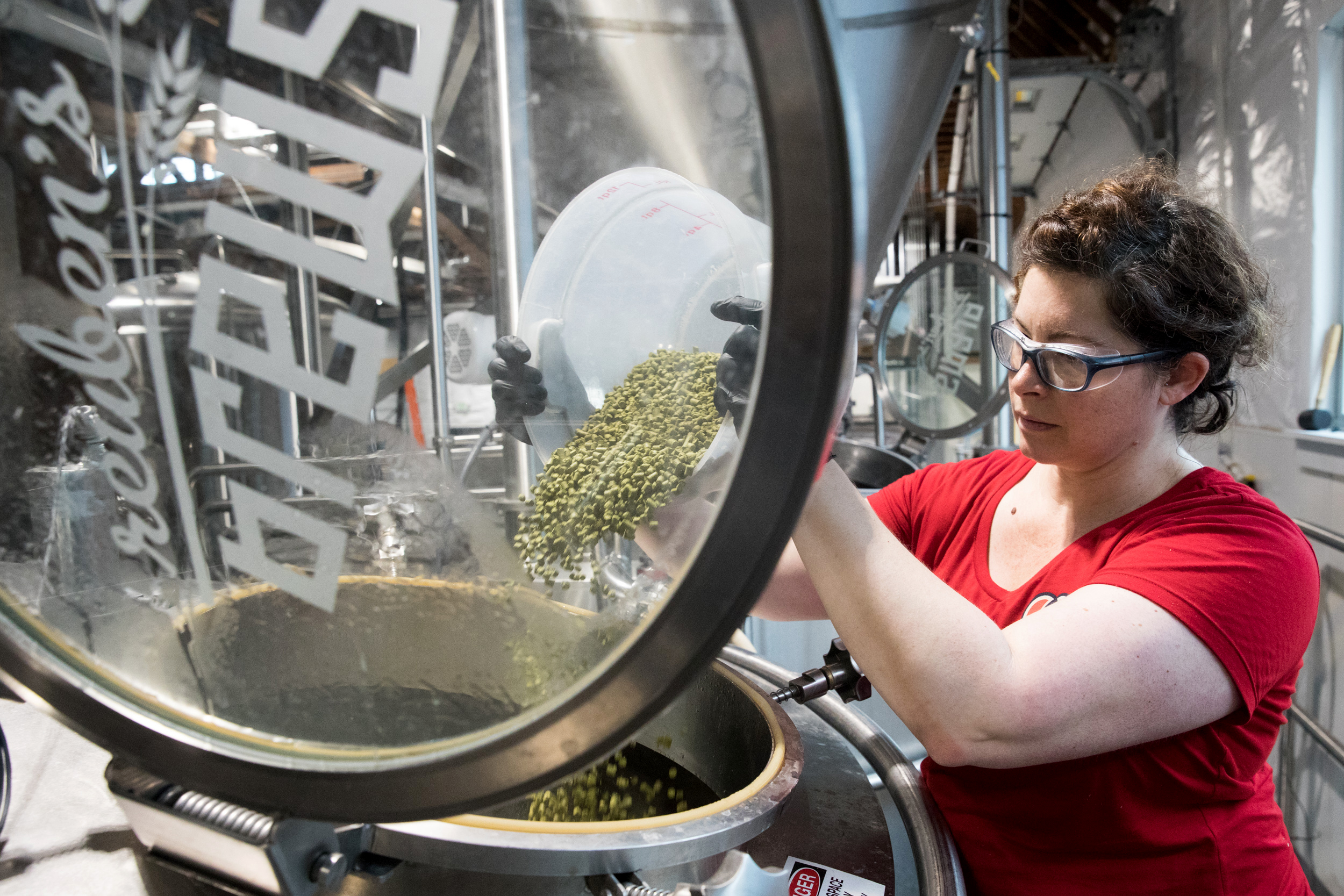
Lauren Bauernschmidt, a habitat biologist with Washington Department of Fish and Wildlife, has never interacted with Salmon Safe, but says that Salmon Safe’s listed core certification standards are excellent.
“I personally believe they do have a strong sense of what improves habitat," she says. "They identify key habitat features such as large wood debris, off-channel habitat, riparian buffers, canopy cover, stream bank stability and sediment delivery prevention. All of these features are what I look for to evaluate the habitat value of a water body and the surrounding ecosystem. These features are also what I identify as needs for restoration projects, where we can get the most ecological bang for our buck. They have identified those features and more in their core standards, so I think they have someone on their team who understands fish habitat.”
Along with the certification, farms receive assistance in applying to sustainability grants; public recognition; and access to Salmon Safe’s branding materials, like those found in Two Beers’ Southern Resident Killer Whale IPA marketing releases. It can help farms reach new markets by easily integrating with other sustainable certifications like USDA Organic, GLOBALG.A.P., Demeter Biodynamic, and others.
“It’s a good thing, but it’s also a marketing tool,” Cox says. “I have no problem with that.”
In addition to Salmon Safe’s scientific soundness, what most impressed Cox was its ability to persuade farmers to get on board. The group says that it prioritizes farmer education and acts as a resource for land management. “Through the certification process, I saw farmers really become more aware of things they could do that wouldn’t have a big economic burden but would have a little benefit for [salmon] streams,” Cox says. “I thought they did a really nice job.”
For farms like Roy’s, trading pesticides for “beneficial predator” insects like ladybugs, lady beetles and predatory mites that control hop pests like two-spotted spider mites and aphids has not been a very difficult transition.
“We have been seeing better results than what we thought we would,” he says.
Katie Wallace, New Belgium's director of social and environmental impact, says the certified farms the brewery works with have reported saving money on fertilizers, pesticides and herbicides while maintaining a healthy yield.
Despite those claims of some financial benefit, there are costs associated with certification that can act as a barrier to some operations. While the certification itself runs about $500 to $900, depending on the industry, the actual cost of bringing a farm up to code can require hard labor and renovation.
“For a lot of farms, switching to these softer [pesticides] is kind of a big gamble.… There’s a pretty substantial increase in cost when it comes to labor [since] we do all of our weeding in baby [hops] by hand rather than applying [pesticides] such as [high-hazard] Solicam,” says Jeff Perrault of nearby Perrault Farms.
That might not seem worth every farmer’s while.
This is especially true for growers who sell to large food manufacturers rather than directly to consumers or craft brewers. When a crop is just one of many ingredients, and the buyer doesn’t have a personal ethical benefit from the purchase, the cost-benefit analysis feels different.
“The challenge we have is influencing large-scale diversified agriculture, particularly east of the mountains. So many crops are commodity crops that don’t carry a message from the farm back into the marketplace, and their [products] are mixed with other growers,” Kent says.
If more breweries or grocers pushed for sustainably grown hops, farmers might respond.
“I think if the end customer wanted it you’d see traction immediately, but the end customer being the breweries, I don't see a whole lot of interest beyond what is there already, quite honestly,” says Roy. The certification aligned with his farm’s personal sustainability goals, but he says, “I don’t think it's going to gain a whole lot of traction in the short term … because the focus to the end consumer is on the beer style and the brewing process in general and not necessarily on the growing practices of the raw materials.”
VandenBrink at Two Beers agrees, noting that financial incentive for brewers isn't there, and he’s not making more money off per-unit sales of SRKW IPA relative to other beers. “[Beverage] consumers are pretty price aware,” he says. “What [brewers] have found over time is that the consumer is not willing to pay more for organic beer," he says, noting that organic ingredients are harder to source, and more expensive to source.
"I assume the same would be true with Salmon-Safe hops," he says, "and we just aren’t able to ask a premium for the product unfortunately."
Correction: An earlier version of this story misspelled the name of Moxie, Wash. The story has been corrected to also clarify Moxie's proximity to the Columbia River.

